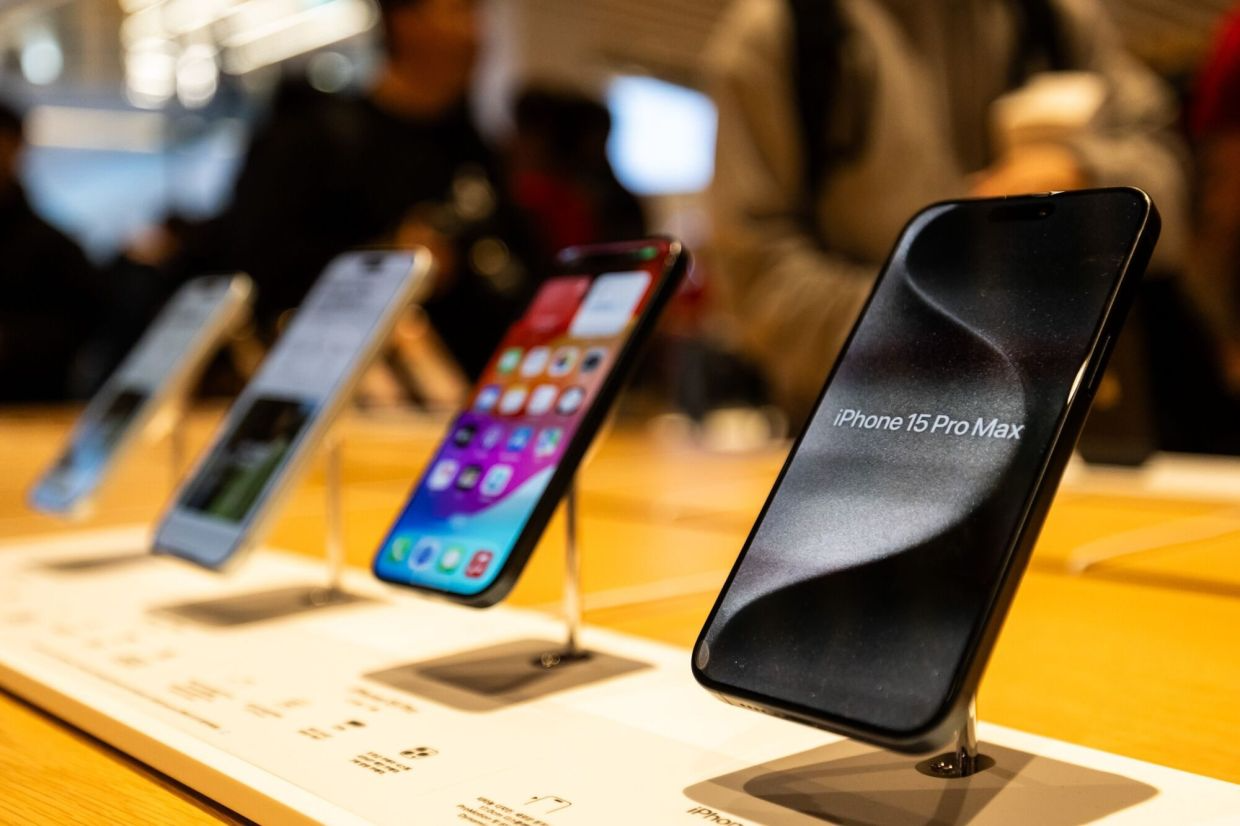Introduction
In the dynamic world of mobile technology, the integration of eSIMs into the latest iPhone models marks a pivotal moment. This seamless revolution in connectivity promises a new era of convenience and flexibility, reshaping how we think about mobile networks and device management. Unlike traditional SIM cards, eSIMs (Embedded Subscriber Identity Modules) offer a digital alternative, eliminating the need for physical swapping and enabling users to switch carriers or manage multiple accounts effortlessly. This technological advancement is not just a step forward; it’s a leap into a future where staying connected is easier, faster, and more intuitive than ever before. For the avid traveler, the busy professional, or the everyday user, the latest iPhones equipped with eSIM technology symbolize freedom – the freedom to choose, to roam, and to connect on one’s own terms. As we delve deeper into the capabilities and benefits of eSIMs in the latest iPhone, we uncover the myriad ways this technology is set to transform our communication experiences, heralding a new chapter in the story of mobile connectivity.
What is an eSIM?
An eSIM, or Embedded Subscriber Identity Module, represents a significant leap in mobile technology, redefining traditional concepts of connectivity and SIM card usage. Unlike its physical counterparts, an eSIM is a small, built-in chip embedded directly into a device, such as the latest iPhone models. This digital approach eliminates the need for physical SIM cards, paving the way for a more streamlined and flexible user experience.
With eSIMs, users can activate a cellular plan without having to use a physical nano-SIM. This feature is particularly beneficial for travelers and those who frequently switch between carriers. It allows for the storing of multiple operator profiles on a single device, effortlessly switchable without needing to physically change SIM cards. This versatility is a game-changer in terms of convenience and efficiency.
Furthermore, eSIM technology simplifies the process of managing mobile plans. Users can subscribe to or change their mobile operator services digitally, often through a simple app or phone setting, without the hassle of visiting a store or handling tiny, easily lost SIM cards. This ease of managing mobile subscriptions is not just a matter of convenience; it’s a step towards more user-friendly, accessible mobile technology.
The adoption of eSIMs by major smartphone manufacturers like Apple in their latest iPhones is a testament to the technology’s growing prominence. It signifies a shift towards a more integrated, digital approach in mobile telephony, offering users a seamless, simplified, and more adaptable mobile experience. As we continue to embrace digital solutions in all aspects of our lives, the eSIM stands out as a key innovation in the telecommunications sector, redefining what it means to stay connected in the modern world.
The Latest iPhone and eSIM Integration
The integration of eSIM technology in the latest iPhone models heralds a significant advancement in how we interact with our mobile devices. This innovative move by Apple underscores the company’s commitment to pioneering future-oriented technology, aligning with the growing trend towards a more connected, digital world.
The latest iPhones, equipped with eSIM capabilities, offer users unparalleled flexibility and convenience. This integration allows users to manage their mobile subscriptions digitally, without the need for a physical SIM card. The eSIM technology embedded in these iPhones enables users to store multiple operator profiles and effortlessly switch between them, a feature especially beneficial for international travelers or those who need to balance personal and work numbers on the same device.
Moreover, the eSIM integration in iPhones simplifies the setup process for new devices. Activation of cellular plans can be done with just a few taps, without the hassle of inserting or removing tiny SIM cards. This ease of setup extends to changing carriers or plans, which can be managed directly from the iPhone’s settings, making the process far more user-friendly and accessible.
The security aspect of eSIMs and iPhones is also noteworthy. Since the eSIM is embedded in the device, it reduces the risk of SIM card theft or loss. The digital nature of eSIMs, combined with Apple’s robust security protocols, ensures that user data and cellular plans are safeguarded against unauthorized access.
Additionally, the eSIM’s integration into iPhones aligns with the environmental goals of reducing plastic waste associated with traditional SIM cards. This eco-friendly approach demonstrates a commitment to sustainability, an increasingly important factor for many consumers.
The integration of eSIM technology in the latest iPhone models represents a significant stride in connectivity. It not only enhances user convenience and security but also reflects a forward-thinking approach to telecommunications. As we move towards a more connected and digital future, eSIM technology in iPhones stands as a testament to innovation and adaptability in the realm of mobile communication.
The Impact on Users
The integration of eSIM technology in the latest iPhones significantly impacts users, offering a new realm of convenience and flexibility. For travelers, this innovation is a game-changer. The ability to switch between international carriers without swapping physical SIM cards means seamless connectivity across borders. Business professionals who juggle multiple numbers benefit immensely too, as eSIMs allow for easy management of multiple lines on a single device.
Everyday users also experience enhanced ease of use. The process of changing carriers becomes straightforward, devoid of physical SIM limitations. This ease extends to setting up new devices – a simpler, more streamlined process.
Moreover, eSIM technology in iPhones paves the way for a future where digital solutions dominate, reflecting a broader trend towards integrated, user-friendly technology. The eSIM’s presence in these popular devices not only makes life easier for the end-user but also showcases a significant shift in how we interact with our mobile technology, moving steadily towards a more connected and efficient digital world.
Setting Up an eSIM on the Latest iPhone
Setting up an eSIM on the latest iPhone models is a straightforward process designed for user convenience. With eSIM technology, Apple has simplified the traditionally cumbersome task of switching carriers or managing multiple phone numbers.
The process begins in the iPhone’s settings, where users can easily add a cellular plan. This is typically done by scanning a QR code provided by the mobile carrier, which automatically configures the eSIM with the necessary details. Users can also enter the information manually if needed. The intuitive interface guides through the setup, making it accessible even for those who are not tech-savvy.
Once the eSIM is activated, users have the flexibility to manage multiple plans on their iPhone. They can designate primary and secondary lines, customize labels for different plans, and switch between them with ease. This feature is particularly beneficial for travelers who need to switch between local and international plans frequently.
For those who use their iPhone for both personal and work purposes, eSIM technology allows the management of both lines efficiently on a single device. Users can assign separate contacts and manage notifications for each line, ensuring a balanced and organized communication experience.
The eSIM setup process on the latest iPhones reflects Apple’s commitment to simplicity and user experience. It not only streamlines the process of switching carriers and managing multiple numbers but also integrates seamlessly into the iPhone’s ecosystem, enhancing the overall usability and appeal of the device.
The Future of Connectivity with eSIMs and iPhone
The fusion of eSIM technology with iPhones marks a significant milestone in the trajectory of mobile connectivity, heralding a future that promises even greater integration and ease of use. As we look ahead, the potential of eSIMs and iPhones extends far beyond the current capabilities, poised to redefine our interaction with mobile networks and digital services.
The future of eSIMs and iPhone may evolve towards even more seamless carrier switching, possibly leveraging real-time network analytics to suggest or automatically switch to the best available network based on location, signal strength, or data plans. This would not only enhance the user experience but also optimize network usage and costs.
Moreover, the integration of eSIMs could pave the way for more sophisticated IoT (Internet of Things) applications. iPhones could become central control points for a myriad of IoT devices, thanks to the ease of managing multiple network connections through eSIM technology. This integration could facilitate a more interconnected and smart environment, where your phone acts as a hub for your smart home, car, wearables, and more.
Another exciting prospect is the potential for eSIMs to enable new business models and services. Subscription-based services, dynamic data plan offerings, and more personalized mobile experiences could emerge, thanks to the flexibility offered by eSIM technology.
In the realm of security and privacy, future developments with eSIMs and iPhone could offer more robust protection and control over personal data. As eSIMs are embedded and secured within the device, they provide a more secure foundation for protecting sensitive information and identity data.
eSIM technology in iPhones is not just a current enhancement of connectivity; it’s a stepping stone towards a more connected, efficient, and innovative future. The possibilities are vast and exciting, and we are just beginning to see the impact of this technology on our daily lives and the broader telecommunications landscape.
Conclusion
The integration of eSIM technology in the latest iPhones marks a pivotal shift in the landscape of mobile connectivity, signifying a move towards a more flexible, efficient, and interconnected future. As we’ve explored, eSIMs offer unparalleled convenience for users, simplifying everything from international travel to managing multiple phone numbers. The seamless blend of this technology with Apple’s intuitive design heralds a new era where the complexities of mobile networking are significantly reduced.
Looking forward, the potential of eSIMs extends beyond current uses, promising advancements in IoT applications, new business models, and enhanced network optimization. This evolution underscores a broader trend towards integrated digital solutions, positioning the latest iPhones not just as communication devices but as central hubs in our increasingly connected lives.
The journey of eSIM technology, particularly in its synergy with iPhones, is a testament to the ongoing innovation in mobile technology, steering us towards a more connected and convenient digital world.





